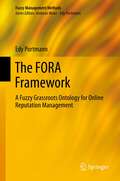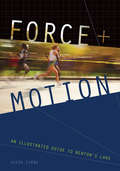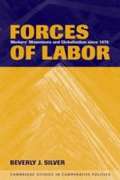- Table View
- List View
The FORA Framework: A Fuzzy Grassroots Ontology for Online Reputation Management (Fuzzy Management Methods)
by Edy PortmannOnline reputation management deals with monitoring and influencing the online record of a person, an organization or a product. The Social Web offers increasingly simple ways to publish and disseminate personal or opinionated information, which can rapidly have a disastrous influence on the online reputation of some of the entities. The author focuses on the Social Web and possibilities of its integration with the Semantic Web as resource for a semi-automated tracking of online reputations using imprecise natural language terms. The inherent structure of natural language supports humans not only in communication but also in the perception of the world. Thereby fuzziness is a promising tool for transforming those human perceptions into computer artifacts. Through fuzzy grassroots ontologies, the Social Semantic Web becomes more naturally and thus can streamline online reputation management. For readers interested in the cross-over field of computer science, information systems, and social sciences, this book is an ideal source for becoming acquainted with the evolving field of fuzzy online reputation management in the Social Semantic Web area.
Forage Crops of the World, 2-volume set: Volume I: Major Forage Crops; Volume II: Minor Forage Crops
by Hedayetullah Parveen ZamanThis new 2-volume set discusses the importance of fodder production of the minor fodder crops for animals. The volumes focuses on fodder production for forage crops, cover 17 major forage crops and 25 minor forage crops. The volumes discuss crop production methodology and agronomic management in a systemic way, providing an abundance of information on each type of forage crop discussed, including preferred soil type, land capability, cropping patterns, climate, and socioeconomic conditions. They also address pests of the various forage crops, disease management, agroforestry in fodder and forage crops, preservation of forage crops, and forage production and climate change. Forage crops are very essential for quality milk and meat production. Farm animals are normally fed fodder available from cultivated areas, supplemented by a small extent with harvested grasses and top feeds. The three major sources of fodder are crop residues, cultivated fodder, and fodder from trees, pastures, and grazing lands. The patterns and types of fodder crops vary by geographical location.
Forage Crops of the World, Volume I: Major Forage Crops
by Md. Hedayetullah Parveen ZamanThis new book, the first of two volumes on forage crops grown throughout the world, discusses the importance of fodder production of the major fodder crops for animals. It focuses on the 17 major forage crops, both non-leguminous perennial forages and leguminous forages. It discusses crop production methodology and agronomic management in a systemic way, providing an abundance of information on each type of forage crop, including preferred soil type, land capability, cropping patterns, climate, and socioeconomic conditions. It goes on to address pests of leguminous forage crops, disease management of non-leguminous seasonal forages, agroforestry in fodder and forage crops, preservation of forage crops, and forage production and climate change. This volume provides valuable information needed for effective forage crop production and management. The book, with chapters from highly qualified scientists, will be a rich resource for researchers, academicians, students, and those in the industry. Volume 2 of Forage Crops of the World focuses on minor forage crops. Key features: • Discusses 17 different types of major forage crops, including many types of grasses and other plants • Provides information on agronomic production practices • Covers pest and disease management practices for forage crops
Forage Crops of the World, Volume I: Major Forage Crops
by Hedayetullah Parveen ZamanThis new book, the first of two volumes on forage crops grown throughout the world, discusses the importance of fodder production of the major fodder crops for animals. It focuses on the 17 major forage crops, both non-leguminous perennial forages and leguminous forages. It discusses crop production methodology and agronomic management in a systemic way, providing an abundance of information on each type of forage crop, including preferred soil type, land capability, cropping patterns, climate, and socioeconomic conditions. It goes on to address pests of leguminous forage crops, disease management of non-leguminous seasonal forages, agroforestry in fodder and forage crops, preservation of forage crops, and forage production and climate change. This volume provides valuable information needed for effective forage crop production and management. The book, with chapters from highly qualified scientists, will be a rich resource for researchers, academicians, students, and those in the industry. Volume 2 of Forage Crops of the World focuses on minor forage crops. Key features: • Discusses 17 different types of major forage crops, including many types of grasses and other plants • Provides information on agronomic production practices • Covers pest and disease management practices for forage crops
Forage Crops of the World, Volume II: Minor Forage Crops
by Md. Hedayetullah Parveen ZamanThis book, the second of two volumes, discusses the importance of fodder production of the minor fodder crops for animals. It focuses on 25 minor forage crops, including non-leguminous perennial forages, leguminous forages, and non-graminaceous forages. It discusses crop production methodology and agronomic management in a systemic way, providing an abundance of information on each type of forage crop discussed, including preferred soil type, land capability, cropping patterns, climate, and socioeconomic conditions. It goes on to address pests, disease management, agroforestry in fodder and forage crops, preservation, and production and climate change. This volume provides valuable information needed for effective forage crop production and management. The book, with chapters from highly qualified scientists, will be a rich resource for researchers, academicians, students, and those in the industry. Forage Crops of the World, Volume I: Major Forage Crops focuses on major forage crops. Key features: • Discusses 25 different types of minor forage crops, including many types of grasses and other plants • Provides information on agronomic production practices • Covers pest and disease management practices for forage crops
Forage Crops of the World, Volume II: Minor Forage Crops
This book, the second of two volumes, discusses the importance of fodder production of the minor fodder crops for animals. It focuses on 25 minor forage crops, including non-leguminous perennial forages, leguminous forages, and non-graminaceous forages. It discusses crop production methodology and agronomic management in a systemic way, providing an abundance of information on each type of forage crop discussed, including preferred soil type, land capability, cropping patterns, climate, and socioeconomic conditions. It goes on to address pests, disease management, agroforestry in fodder and forage crops, preservation, and production and climate change. This volume provides valuable information needed for effective forage crop production and management. The book, with chapters from highly qualified scientists, will be a rich resource for researchers, academicians, students, and those in the industry. Forage Crops of the World, Volume I: Major Forage Crops focuses on major forage crops. Key features: • Discusses 25 different types of minor forage crops, including many types of grasses and other plants • Provides information on agronomic production practices • Covers pest and disease management practices for forage crops
Forages, Volume 1: An Introduction to Grassland Agriculture
by Robert F. BarnesForages, Volume I, Seventh Edition is the most comprehensive text available for teachers of undergraduate Forages courses. This edition will provide students with a good balance of scientific principles, to aid in integrating the concepts they learn, and practical information on forage identification, plant characteristics, management, and utilization that can be used by forage management practitioners. Grassland ecosystems are extremely complex, including the plant/animal interface as well as the soil/climate/forage interface and the text must support understanding and integration of all of these considerations. The coverage of the science behind the plant characteristics and responses make the book applicable in many parts of the world, while other region-specific management information relates mainly to North America.This edition has been updated to address emerging areas of study, including the use of forage plants as bioenergy crops. The editors also address the renewed national interest in environmental issues such as water quality, global climate change and eutrophication in the Gulf. This edition also addresses the role of forages for wildlife habitat and food sources, another area of increased interest in recent years. These revisions respond to the generational change taking place among forage scientists and teachers in recent years.
Forages, Volume 1: An Introduction to Grassland Agriculture
by Michael Collins C. Jerry Nelson Kenneth J. Moore Robert F BarnesForages, Volume I, Seventh Edition is the most comprehensive text available for teachers of undergraduate Forages courses. This edition will provide students with a good balance of scientific principles, to aid in integrating the concepts they learn, and practical information on forage identification, plant characteristics, management, and utilization that can be used by forage management practitioners. Grassland ecosystems are extremely complex, including the plant/animal interface as well as the soil/climate/forage interface and the text must support understanding and integration of all of these considerations. The coverage of the science behind the plant characteristics and responses make the book applicable in many parts of the world, while other region-specific management information relates mainly to North America.This edition has been updated to address emerging areas of study, including the use of forage plants as bioenergy crops. The editors also address the renewed national interest in environmental issues such as water quality, global climate change and eutrophication in the Gulf. This edition also addresses the role of forages for wildlife habitat and food sources, another area of increased interest in recent years. These revisions respond to the generational change taking place among forage scientists and teachers in recent years.
Forages, Volume 2: The Science of Grassland Agriculture (Special Publication Ser. #Vol. 22)
by Kenneth J. Moore Michael Collins C. Jerry Nelson Daren D. RedfearnForages: The Science of Grassland Agriculture, 7th Edition, Volume II will extensively evaluate the current knowledge and information on forage agriculture.Chapters written by leading researchers and authorities in grassland agriculture are aggregated under section themes, each one representing a major topic within grassland science and agriculture. This 7th edition will include two new additional chapters covering all aspects of forage physiology in three separate chapters, instead of one in previous editions. Chapters will be updated throughout to include new information that has developed since the last edition.This new edition of the classic reference serves as a comprehensive supplement to An Introduction to Grassland Agriculture, Volume I.
Forages, Volume 2: The Science of Grassland Agriculture
Forages: The Science of Grassland Agriculture, 7th Edition, Volume II will extensively evaluate the current knowledge and information on forage agriculture.Chapters written by leading researchers and authorities in grassland agriculture are aggregated under section themes, each one representing a major topic within grassland science and agriculture. This 7th edition will include two new additional chapters covering all aspects of forage physiology in three separate chapters, instead of one in previous editions. Chapters will be updated throughout to include new information that has developed since the last edition.This new edition of the classic reference serves as a comprehensive supplement to An Introduction to Grassland Agriculture, Volume I.
Force 10 from Navarone: Force 10 From Navarone (Cinema Classics Ser.)
by Alistair MacLeanThe thrilling sequel to Alistair MacLean’s masterpiece of World War II adventure, The Guns of Navarone.
Force and Motion: An Illustrated Guide to Newton's Laws
by Jason ZimbaIsaac Newton developed three laws of motion that govern the everyday world. These laws are usually presented in purely mathematical forms, but Jason Zimba breaks with tradition and treats them visually. This unique approach allows students to appreciate the conceptual underpinnings of each law before moving on to qualitative descriptions of motion and, finally, to the equations and their solutions.Zimba has organized the book into seventeen brief and well-sequenced lessons, which focus on simple, manageable topics and delve into areas that often cause students to stumble. Each lesson is followed by a set of original problems that have been student-tested and refined over twenty years. Zimba illustrates the laws with more than 350 diagrams, an innovative presentation that offers a fresh way to teach the fundamentals in introductory physics, mechanics, and kinematics courses.
Force and Position Control of Mechatronic Systems: Design and Applications in Medical Devices (Advances in Industrial Control)
by Tong Heng Lee Wenyu Liang Clarence W. de Silva Kok Kiong TanForce and Position Control of Mechatronic Systems provides an overview of the general concepts and technologies in the area of force and position control. Novel ideas and innovations related to this area are presented and reported in detail, and examples of applications in medical technology are given.The book begins by introducing force sensing, and modelling of contacting objects. In then moves steadily through a variety of topics, including:• disturbance observer-based force estimation;• force-based supervisory control;• stabilization systems;• controller design; and• control of tube insertion procedures.This book will be of interest to researchers, engineers and students interested in force control, particularly those with a focus on medical applications of these ideas.Advances in Industrial Control reports and encourages the transfer of technology in control engineering. The rapid development of control technology has an impact on all areas of the control discipline. The series offers an opportunity for researchers to present an extended exposition of new work in all aspects of industrial control.
Force Control Theory and Method of Human Load Carrying Exoskeleton Suit
by Zhiyong Yang Wenjin Gu Jing Zhang Lihua GuiThis book reports on the latest advances in concepts and further development of principal component analysis (PCA), discussing in detail a number of open problems related to dimensional reduction techniques and their extensions. It brings together research findings, previously scattered throughout many scientific journal papers worldwide, and presents them in a methodologically unified form. Offering vital insights into the subject matter in self-contained chapters that balance the theory and concrete applications, and focusing on open problems, it is essential reading for all researchers and practitioners with an interest in PCA
Force-Controlled Robotic Assembly Processes of Rigid and Flexible Objects: Methodologies and Applications
by Ibrahim Fahad GhalyanThis book provides comprehensive and integrated approaches for rigid and flexible object assembly. It presents comparison studies with the available force-guided robotic processes and covers contact-state modeling, scheme control strategies, and position searching algorithms. Further, it includes experimental validations for different assembly situations, including those for the assembly of industrial parts taken from the automotive industry.
Force Majeure in the Hydropower Industry: Concepts and Case Studies
by Daniel Constantin DiaconuThis book aims to highlight the particular situation faced by certain hydropower companies by the fact that they cannot fulfil their contracts due to force majeure. The first part of this book will be an analysis of how water is used in electricity production. It is important to point out that all types of energy sources use water, to a different extent, of course, and that its spatial and temporal availability is very important. The focus will be on hydropower, presenting the current situation at the global level, and the effect of reducing the amounts of water in the river system.The second part is based on the presentation of the concept of force majeure and the ways of presenting and drafting it in a contract. Many disputes or the success of a contract depended heavily on the provisions of this article of the contract. Obviously, there are also situations in which the signatory parties abuse or are not protected by these provisions of force majeure. Starting from a few brief examples from the international level, we reach a wide discussion of the situation created in Romania, when the largest supplier of electricity produced on the basis of water terminates several contracts invoking force majeure. The manner in which the opinion of the parties involved is presented to the court is analyzed and presented in detail.
Force Sensors for Microelectronic Packaging Applications (Microtechnology and MEMS)
by Jürg Schwizer Michael Mayer Oliver BrandIntended for wire-bonding and flip-chip packaging professionals and for scientists and engineers working in the field of mechanical microsensors, this practical monograph introduces novel measurement technologies that allow for in situ and real-time examination of physical processes during the packaging process or during subsequent reliability tests. The measurement system presented here makes possible measurements at formerly inaccessible packaging interconnects. For the first time it becomes possible to describe the wire-bonding process window in terms of the physical forces at the contact zone instead of the applied machine settings. This is significant for a deeper understanding and future development of these packaging processes. Applications of the sensor in the field of wire bonding and flip-chip characterization are also illustrated. The reader will gain much insight into the important field of interconnection technology in semiconductor packaging.
Forcefields for Atomistic-Scale Simulations: Materials and Applications (Lecture Notes in Applied and Computational Mechanics #99)
by Akarsh Verma Sanjay Mavinkere Rangappa Shigenobu Ogata Suchart SiengchinThis book describes the forcefields/interatomic potentials that are used in the atomistic-scale and molecular dynamics simulations. It covers mechanisms, salient features, formulations, important aspects and case studies of various forcefields utilized for characterizing various materials (such as nuclear materials and nanomaterials) and applications. This book gives many help to students and researchers who are studying the forcefield potentials and introduces various applications of atomistic-scale simulations to professors who are researching molecular dynamics.
Forces, Growth and Form in Soft Condensed Matter: At the Interface between Physics and Biology (NATO Science Series II: Mathematics, Physics and Chemistry #160)
by A. T. Skjeltorp A. V. BelushkinThis volume comprises the proceedings of a NATO Advanced Study Institute held at Geilo, Norway, 24 March - 3 April 2003, the seventeenth ASI in a series held every two years since 1971. The objective of this ASI was to identify and discuss areas where synergism between modern physics, soft condensed matter and biology might be most fruitful. The main pedagogical approach was to have lecturers focussing on basic understanding of important aspects of the relative role of the various interaction- electrostatic, hydrophobic, steric, conformational, van der Waals etc. Soft condensed matter and the connection between physics and biology have been the themes of several earlier Geilo Schools. A return to these subjects thus allowed a fresh look and a possibility for defining new directions for research. Examples of soft materials, which were discussed at this ASI, included colloidal dispersions, gels, biopolymers and charged polymer solutions, polyelectrolytes, protein/membrane complexes, nucleic acids and their complexes. Indeed, most forms of condensed matter are soft and these substances are composed of aggregates and macromolecules, with interactions that are too weak and complex to form crystals spontaneously. A characteristic feature is that small external forces, slight perturbations in temperature, pressure or concentration, can all be enough to induce significant structural changes. Thermal fluctuations are almost by definition strong in soft materials and entropy is a predominant determinant of structure, so that disorder, slow dynamics and plastic deformation are the rule. Hence the phrase ‘soft condensed matter’ has been coined.
Forces in Scanning Probe Methods (NATO Science Series E: #286)
by H. J. Güntherodt D. Anselmetti E. MeyerProceedings of the NATO Advanced Study Institute, Schluchsee, Germany, March 7--18, 1994
Forces Of Labor: Workers' Movements And Globalization Since 1870 (PDF)
by Beverly J. Silver Robert H. Bates Ellen Comisso Peter Lange Joel Migdal Helen MilnerRecasting labor studies in a long-term and global framework, this 2003 book draws on a major database on world labor unrest to show how local labor movements have been related to world-scale political, economic and social processes since the late-nineteenth century. Through an in-depth empirical analysis of select global industries it demonstrates how the main locations of labor unrest have shifted from country to country together with shifts in the geographical location of production. It shows how the main sites of labor unrest have shifted over time together with the rise/decline of new leading sectors of capitalist development, and demonstrates that labor movements have been deeply embedded (as both cause and effect) in world political dynamics. The book concludes by exploring the likely forms that emergent labor movements will take in the twenty-first century.
The Ford SOHC Pinto & Sierra Cosworth DOHC Engines high-peformance manual: For Road & Track (SpeedPro)
by Des HammillExpert practical advice from an experienced race engine builder on how to build a high-performance version of Ford's naturally aspirated 4-cylinder 1600, 1800 & 2000cc Pinto engine which has been used in Ford's most popular cars (Escort, Capri, Cortina & Sierra - Ford/Mercury Capri, Pinto, Bobcat in USA) over many years. Whether the reader wants a fast road car or to go racing, Des explains, without using technical jargon, just how to build a reliable high-power engine using as many stock parts as possible and without wasting money on parts and modifications that don't work. Also covers Cosworth versions of Pinto engines and fitting Cosworth heads to Pinto blocks. Does not cover 1300, E-Max 1600 or American-built 2300.
Förder- und Lagertechnik (Viewegs Fachbücher der Technik)
by Heinrich MartinDas Fachbuch "Förder-und Lagertechnik" gibt in knapper und systematischer Form einen vertiefenden Überblick über Fördermittel des innerbetrieblichen Transportes - Materialfluß-und Lagertechnik - systematische Vorgehensweisen bei Untersuchungen und Planungen. Dieses Lehr-und Arbeitsbuch richtet sich an Studenten der technischen Fachrichtung und an im Beruf stehende Praktiker, die sich in erster Linie mit der planerischen Seite dieses Fachgebietes beschäftigen müssen. Bei der Ausarbeitung des Buches wurde auf maschinenbauspezifische und konstruktive Berechnungen der Fördermittel verzichtet und der Schwerpunkt auf die planerische Fördertechnik mit der notwendigen Vordimensionierungen gelegt. So sind die einzelnen Fördermittel nach funktionellem Aufbau, Vor-und Nachteilen, Einsatzgebieten und planerisch interessierenden Größen behandelt worden. Berücksichtigt wurden die SI Einheiten, neu festgelegte Benennungen und der neueste Stand der DIN-Normen, die besonders auf den Gebieten der Hebezeuge, Seile und Ketten in letzter Zeit eine starke Bearbeitung erfahren haben. Am Ende eines jeden Kapitels wird eine Zusammenfassung der DIN-Normen und VDI-Richtlinien zur weiteren Vertiefung gegeben. Beispiele und Fragen sollen den dargebotenen Stoff ergänzen und festigen. Das Buch enthält eine Fülle von technischen Zeichnungen oder Prinzipskizzen, da diese den Aufbau eines Förder mittels oder eines Details am besten wiedergeben können. Systematische Ein-und Unter teilungen sind in Tafelform übersichtlich aufbereitet. Fördermittel, die ftir die Mechanisierung und Automatisierung des innerbetrieblichen Materialflusses und des Lagerbereiches eine erhebliche Bedeutung haben, sind besonders herausgestellt worden. In diesem Zusammenhang ist auch die Vielzahl der verwendeten Firmenbilder zu nennen, die den heutigen Stand der Fördertechnik in Form, Prinzip und Ausftihrung erkennen lassen.
Förderketten und Kettenräder: Grundlagen, Weiterentwicklung und Anwendungsbeispiele
by KettenWulf Betriebs GmbHMit diesem Buch soll eine Lücke der Fachliteratur zu Förderketten und Kettenrädern in der Fördertechnik geschlossen werden. Fachliteratur über Kettengetriebe zur Kraftübertragung mit Antriebsketten als Zugmittel ist zahlreich vorhanden, nicht aber zu Förderketten und Kettenrädern, die als Maschinenelemente in Förderanlagen das Förderkettengetriebe zum Fördern und Bewegen von Gütern aller Art bilden. Das Buch umfasst grundlegende Informationen über Förderketten und Kettenräder, deren Berechnung und Fertigungstechniken sowie die Weiterentwicklung der Standardausführungen hin zu Produkttechniken, die den aktuellen Anforderungen wie Umweltschutz, Energieeffizienz, Wartungsoptimierung und Nachhaltigkeit entsprechen. Praxisrealisierungen werden in vielfältigen Anwendungsbeispielen vorgestellt.
Fördermaschinen: Hebezeuge, Aufzüge, Flurförderzeuge (Fördertechnik und Baumaschinen)
by Martin Scheffler Klaus Feyrer Karl MatthiasIn Form eines Grundlagenwerkes werden die rechnerischen, konstruktiven und planerischen Inhalte für den Praktiker dargestellt. Die Systematik deckt alle Bereiche der Hebe- und Flurförderzeuge ab.




















